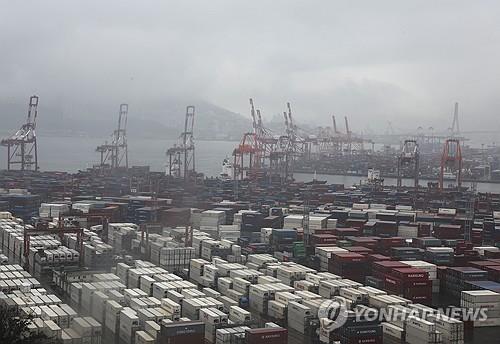- California Assembly OKs highest minimum wage in nation
- S. Korea unveils first graphic cigarette warnings
- US joins with South Korea, Japan in bid to deter North Korea
- LPGA golfer Chun In-gee finally back in action
- S. Korea won’t be top seed in final World Cup qualification round
- US men’s soccer misses 2nd straight Olympics
- US back on track in qualifying with 4-0 win over Guatemala
- High-intensity workout injuries spawn cottage industry
- CDC expands range of Zika mosquitoes into parts of Northeast
- Who knew? ‘The Walking Dead’ is helping families connect
BOK likely to stand pat again next month on Fed’s rate freeze, slowdown
The U.S. Federal Reserve’s rate pause this month may give relief to South Korea’s central bank, which is widely expected to stand pat again on its rate level next month amid concerns over an economic slowdown and rising household debt.
But the Fed’s possible rate hikes down the road could put the Bank of Korea (BOK) in a quandary over the fallout from a high rate gap between the two countries.
On Oct. 19, the BOK is widely predicted to leave the rate, which currently stands at 3.5 percent, unchanged, the sixth straight rate freeze in the face of a murky growth outlook and moderating inflation.
The rate freezes would come after the BOK delivered seven consecutive hikes in borrowing costs since April last year.
South Korea has been dogged by slumping exports and sluggish consumer spending. In August, its exports fell 8.4 percent on-year, marking the 11th consecutive month of decline.
Weak global demand, led by China’s slowing economy, and a delay in the recovery of the IT sector are blamed for a slump in outbound shipments.
Domestic consumption has also been in the doldrums amid high interest rates and consumer inflation.
At the August meeting, the central bank maintained its growth outlook for this year at 1.4 percent, unchanged from its May forecast, but slashed next year’s to 2.2 percent from 2.3 percent, and inflation outlooks were unchanged.
South Korea’s inflation has eased since peaking at a 24-year high of 6.3 percent in July 2022.
Consumer prices increased at a faster-than-expected pace of 3.4 percent in August due to rising prices of farm goods and oil products, accelerating from the 2.3 percent increase in July.
It was the highest on-year rise since the 3.7 percent growth tallied in April and is still far higher than the central bank’s medium target of 2 percent.
The central bank has said inflation may slow next year, but higher oil prices may put upward pressure on consumer prices.
The central bank is also paying keen attention to rising household debts.
Household loans extended by banks in South Korea rose by the sharpest in over two years in August on increased demand for home-backed loans.
Banks’ outstanding household loans rose 6.9 trillion won from a month earlier, the largest since July 2021, when such loans rose 9.7 trillion won.
The August tally also marks the fifth consecutive month of an on-month rise.
The U.S. central bank has signaled borrowing costs, currently standing at between 5.25 percent and 5.50 percent, may rise by as much as a quarter percentage point by the end of the year, which could trigger capital flight from South Korea and further weaken the South Korean currency.












